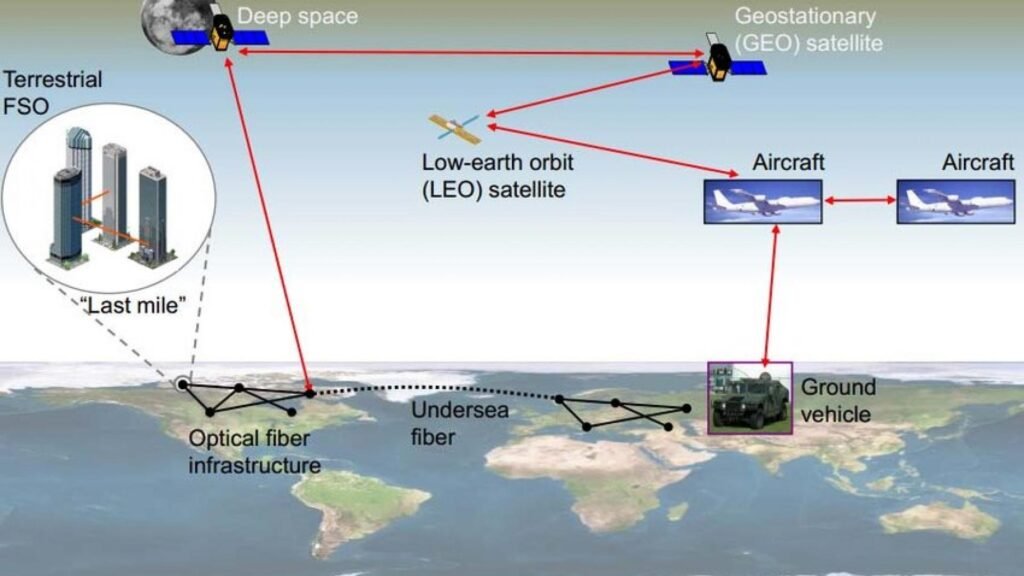Introduction:
In the ever-evolving landscape of telecommunications, one technology stands out as a beacon of speed, efficiency, and reliability—Fiber Optic Communication. As the backbone of our interconnected world, fiber optics has revolutionized the way information travels, offering unprecedented data transfer rates and reliability. In this blog post, we will explore the fascinating world of fiber optic communication, delving into its history, components, working principles, and the myriad of applications that make it an indispensable part of our digital infrastructure.
The Evolution of Fiber Optics:
The roots of fiber optic communication can be traced back to the early 19th century when researchers began experimenting with the concept of guiding light through transparent materials. However, it wasn’t until the mid-20th century that significant breakthroughs occurred. In 1952, physicist Narinder Singh Kapany coined the term “fiber optics” and laid the foundation for the development of the technology.
The Components of Fiber Optic Systems:
- Optical Fibers: At the core of fiber optic communication are the optical fibers themselves. These thin strands of glass or plastic transmit data using light signals. The high refractive index of the core allows the light to be effectively guided through multiple internal reflections, minimizing signal loss.
- Light Sources: Light-emitting diodes (LEDs) and laser diodes serve as the primary light sources in fiber optic systems. Their properties, including wavelength and coherence, play a crucial role in determining the system’s performance.
- Optical Connectors and Splices: Connectors and splices are vital for linking different fiber optic cables seamlessly. Precision is key in ensuring minimal signal loss at these junctions.
- Optical Receivers: Optical receivers convert incoming light signals back into electrical signals. These receivers must be highly sensitive to detect even the faintest signals transmitted through the optical fibers.
Working Principles of Fiber Optic Communication:
Fiber optic communication operates on the principle of total internal reflection. When light enters the core of the optical fiber at an angle greater than the critical angle, it reflects internally and travels along the fiber. This method allows for the transmission of data over long distances without significant signal degradation.
Advantages of Fiber Optic Communication:
- High Bandwidth: Fiber optics can support much higher bandwidths compared to traditional copper cables. This translates to faster data transfer rates, making it ideal for bandwidth-intensive applications.
- Low Signal Loss: Due to the use of total internal reflection, signal loss in fiber optic communication is significantly lower than in copper-based systems. This allows for longer transmission distances without the need for signal amplification.
- Immunity to Electromagnetic Interference: Unlike copper cables, fiber optics are not susceptible to electromagnetic interference. This makes them ideal for environments with high electromagnetic activity, such as industrial settings.

Applications of Fiber Optic Communication:
- Telecommunications: Fiber optics form the backbone of global telecommunications networks, enabling high-speed data transmission for internet, telephone, and television services.
- Data Centers: In the realm of data centers, where rapid and reliable data transfer is crucial, fiber optic communication is the preferred choice for interconnecting servers and storage systems.
- Medical Imaging: Fiber optics play a vital role in medical imaging equipment, providing high-resolution imaging capabilities in endoscopes and other diagnostic devices.
- Military and Aerospace: The lightweight and secure nature of fiber optic communication make it indispensable in military and aerospace applications, where reliability and data security are paramount.
- Smart Cities: As cities around the world embrace the concept of smart cities, fiber optic communication is instrumental in supporting the infrastructure required for intelligent transportation, surveillance, and public services.
Challenges and Future Developments:
While fiber optic communication has revolutionized the way we transmit data, there are still challenges to overcome. The initial installation cost of fiber optic infrastructure can be high, and issues such as signal attenuation in certain environmental conditions need to be addressed. Researchers are continually working on developing more cost-effective solutions and improving the technology to meet the growing demands of our interconnected world.
In conclusion, fiber optic communication has not only transformed the way we connect and communicate but has also paved the way for future innovations. As technology continues to advance, the role of fiber optics in shaping the digital landscape is bound to become even more significant. The journey of light through these slender strands of glass or plastic is indeed illuminating the path towards a faster, more connected future.



